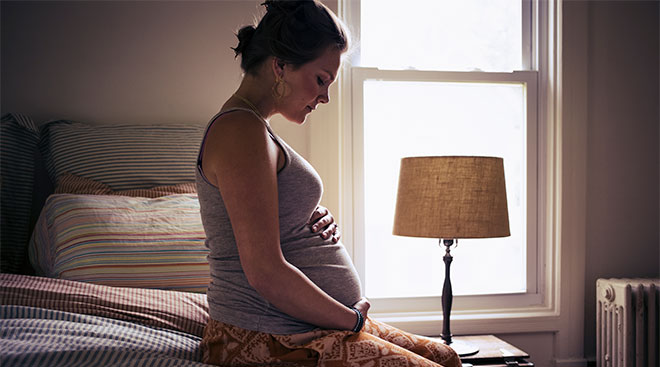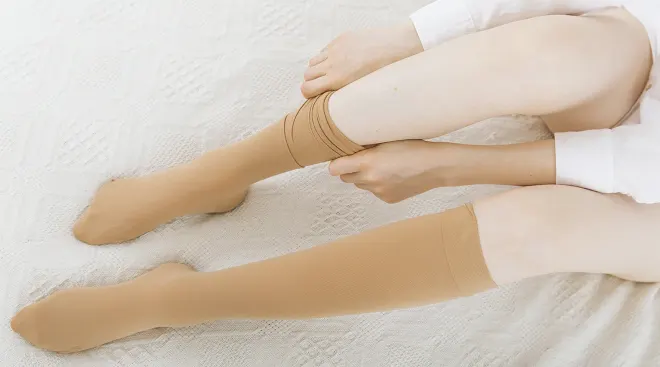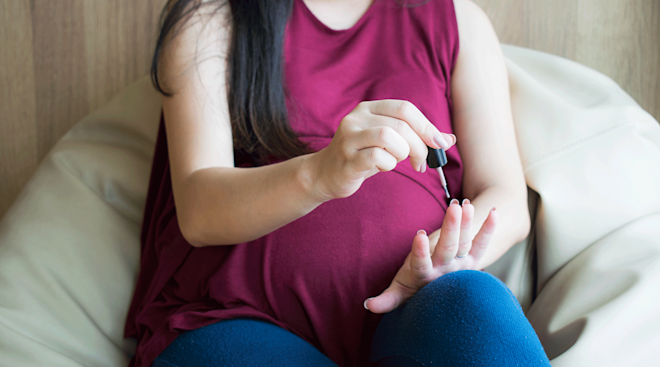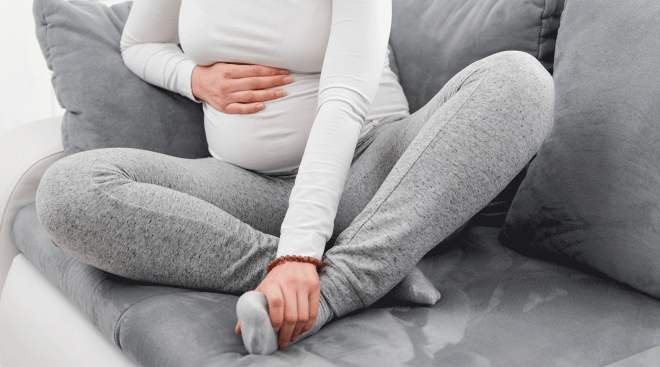What Is SPD? Everything to Know About Symphysis Pubis Dysfunction
Pregnancy can come with a whole list of random aches, pangs and twinges you didn’t see coming. But if you’re having pelvic girdle pain or joint discomfort, it could be due to a condition called SPD—or symphysis pubis dysfunction. For the record, SPD won’t affect baby at all, but it can make you feel very uncomfortable during pregnancy.
Whether you’re just starting to experience some pelvic pain or have a confirmed SPD diagnosis, you likely have questions about what’s happening in your body and how to get relief. Ready for answers? From SPD symptoms to treatment, here’s everything you need to know.
SPD stands for symphysis pubis dysfunction, a condition that causes pelvic pain in pregnant people. “During pregnancy, the joint between the two pubic bones—the symphysis, which is usually a firmly fixed and immovable joint—starts to loosen a bit in order to prepare for a baby to fit through the pelvis,” explains Jonathan Schaffir, MD, an ob-gyn at the Ohio State University Wexner Medical Center. “In some women, this loosening creates an instability of the joint that causes strain on the surrounding joints and ligaments of the pelvis.” This can make movement painful.
SPD is “not a common disorder, but we surely see it,” says Julie Lamppa, APRN, a certified nurse-midwife at the Mayo Clinic. Still, while it’s not regarded as a particularly pervasive condition, many moms-to-be will experience pubic symphysis pain; it can be dull and mild or absolutely agonizing.
It’s not entirely clear why some women develop SPD in pregnancy and others don’t. But there are a few factors that may raise your risk of developing the condition, notes Lamppa:
- Excessive weight gain in pregnancy
- Having a large baby
- A history of SPD in a previous pregnancy
Additionally, if you have a pre-existing injury to your pelvic bones or pain from conditions like arthritis, the risk of getting SPD is higher, Schaffir says.
Some sporadic pangs are par for the course in any pregnancy. But SPD is different from feeling the occasional sharp pain in your groin or hips when you stretch out your pelvis, Schaffir says. While it’s not common, some women with SPD will have “instability to the degree that it causes severe pain or interferes with normal activity.”
According to Lamppa, SPD symptoms usually include “pain or tenderness felt in the front of the pubic bone that can also radiate to the hips and other areas of the pelvis.” It usually gets worse with certain movements and can “come on suddenly and be excruciating,” like when you’re trying to get out of bed or walking up stairs.
You may want a definitive answer or explanation, but there’s no specific test you can have to get a confirmed SPD diagnosis. “Typically, SPD is diagnosed based on symptoms and physical exam alone,” Lamppa says. Imaging tests can be done to look at your joints but are generally not recommended during pregnancy and will usually be put off until after delivery (if the pain lingers).
Unfortunately, there isn’t a specific SPD treatment you can turn to. However, there are a few different options you can try to get some relief from pelvic girdle pain. Talk to your doctor about your options; either way, your SPD treatment plan may include:
Symphysis pubis dysfunction exercises
If you’re struggling with SPD pain, your doctor may refer you to a physical therapist. “Physical therapy may be helpful to prescribe exercises that strengthen the muscles and ligaments of the pelvis, which improve stability of the joint,” Schaffir says. Symphysis pubis dysfunction exercises and stretches may include:
- Tightening and releasing your pelvic floor muscles (like you’re trying to stop yourself from peeing)
- Pulling your belly button into your spine, holding it for a few seconds and then releasing (and then repeating several times)
- Doing “bird dogs,” which involve getting on your hands and knees and alternating raising your opposite arm and leg while pulling your belly button into your spine
SPD medication
Acetaminophen is considered a safe medication in pregnancy, but it “may not be extremely helpful with SPD pain,” Lamppa says.
Instead, she recommends focusing on your movements and activities: “You want to keep your pelvis stable by taking shorter strides when walking, keeping your legs side by side when getting out of the car or bed and keeping legs together when rolling over in bed.” She also suggests avoiding certain exercises and positions: Lunging and sitting with your legs crossed can exacerbate any discomfort. Shaffir also recommends using a heating pad on your lower back. (Just make sure the pad isn’t too hot, and don’t use it for an extended period of time.)
Pelvic support belts for SPD
A pelvic support belt for SPD can be helpful too. “They help to compress the symphysis joint, holding the bones of the pelvic girdle together, and add stability during movement,” Schaffir explains. It probably won’t eliminate your pain entirely, but it can minimize it. Don’t know where to start your search? Try one of these pelvic support belts for SPD:
Belly Bandit V-Sling Pelvic Support Band
This support band goes on like underwear and helps relieve pelvic pressure. It’s fully adjustable, so you can find the fit that’s right for you. Worth noting: You can easily wear it under your clothes.
Buy it: Belly Bandit V-Sling Pelvic Support Band, $50, Amazon.com
NeoTech Care Pregnancy Support Maternity Belt
The Neotech Care support belt is an Amazon bestseller. It’s specially designed to help with low back and pelvic support, and wraps around (and under) your belly. Several women say in the reviews that it helped alleviate their SPD pain.
Buy it: Neotech Care Pregnancy Support Maternity Belt, $27, Amazon.com
Odwoj Maternity Support Belt
The Odwoj Maternity Support Belt wraps around your hips and your bump, helping take the pressure off your front while helping to keep your joints in place. It’s adjustable, so you can find the level of support that’s comfortable for you.
Buy it: Odwoj Maternity Support Belt, $30, Amazon.com
It may take a little time after you deliver for your SPD pain to go away. “The relaxation of the joint should improve soon after delivery, but, as with many pregnancy-related changes, it may take six weeks for the symptoms to resolve,” Schaffir explains. If you’re still uncomfortable after giving birth, he recommends continuing to wear a support belt and resting on your side in bed. You can also take non-steroidal anti-inflammatory medications like ibuprofen, Lamppa says. And if your pain continues to be severe, talk to your doctor. It may be time to do an imaging test to see what’s going on in there.
If you have SPD, pregnancy can feel extra uncomfortable. Your best bet is to proactively care for your body and be cautious and careful with abrupt or strenuous activities; try to be mindful of the movements you make and the strides you take. Hopefully, you’ll get relief soon after baby is born.
About the experts:
Julie Lamppa, APRN, is a certified nurse-midwife at the Mayo Clinic and the author of Obstetricks. She earned her degree at the University of Minnesota Medical School in Minneapolis.
Jonathan Schaffir, MD, is an ob-gyn at the Ohio State University Wexner Medical Center. He received his medical degree from Brown University in Providence, Rhode Island.
Please note: The Bump and the materials and information it contains are not intended to, and do not constitute, medical or other health advice or diagnosis and should not be used as such. You should always consult with a qualified physician or health professional about your specific circumstances.
Plus, more from The Bump:
Navigate forward to interact with the calendar and select a date. Press the question mark key to get the keyboard shortcuts for changing dates.




















































